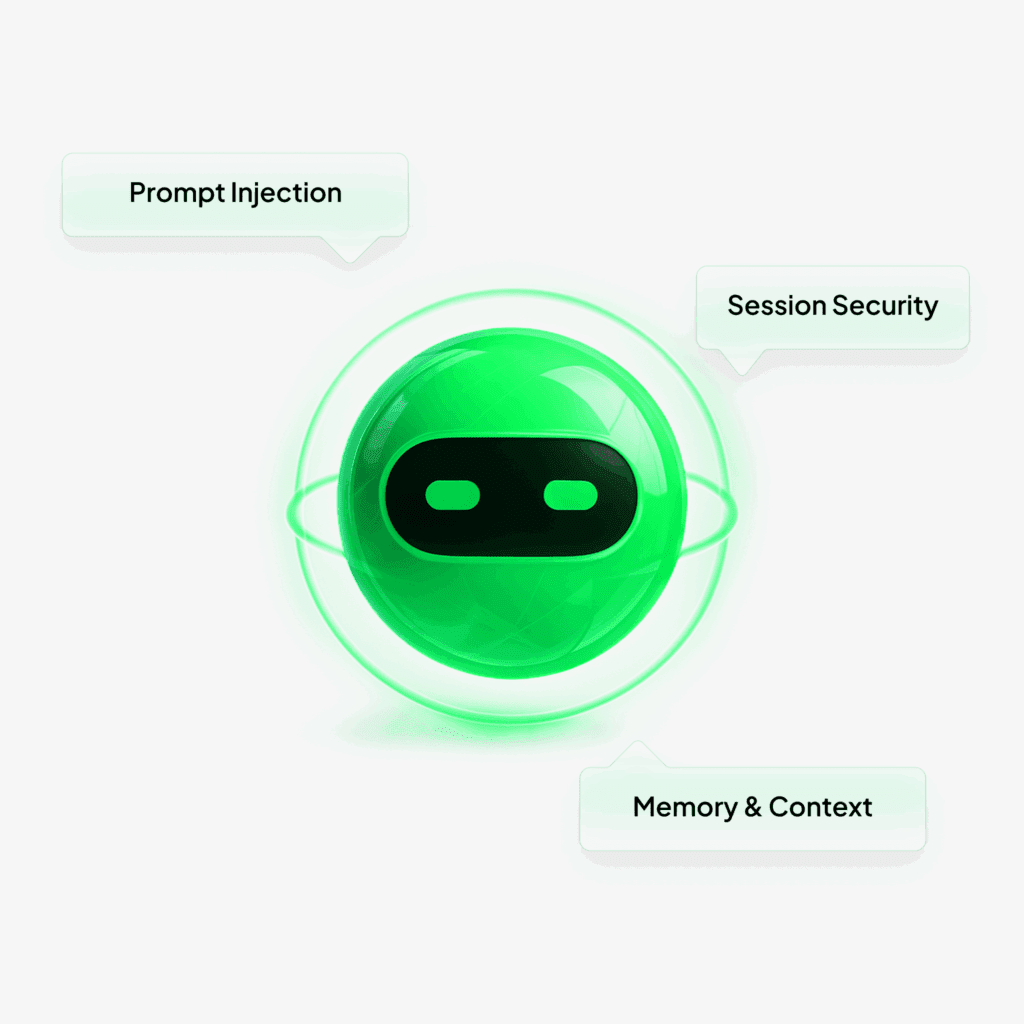Chatbots are the new front door to your business, and attackers know it. Strobes AI Chatbot Security Testing puts every angle of conversational AI under pressure to expose risks before they cause damage.
AI Chatbot Security
What happens when a chatbot spills secrets or follows a malicious prompt? One slip can expose data, break trust, and trigger compliance issues. Strobes AI Chatbot Security Testing runs controlled attack scenarios to reveal how your bots respond under pressure and where security gaps exist.
Our Approach to AI Chatbot Security Testing

Why Fortune 500 Companies Choose Strobes
Firewalls Don’t Speak AI
Firewalls block traffic, not logic. Malicious prompts, hidden instructions, and multi-turn traps bypass static rules and directly exploit chatbot reasoning.
WAFs Miss Chatbot Exploits
Web application firewalls were never designed for AI. They fail to detect prompt injections, cross-language bypasses, and chatbot-specific logic flaws.
Pentests Ignore Model Logic
Standard pentests target infrastructure, not intelligence. They miss poisoned training data, adversarial inputs, and memory corruption that destabilize AI models.
AI Needs AI-Native Testing
Generic tools can’t validate AI under stress. Only AI-specific testing reveals resilience against data leaks, prompt manipulation, and unsafe outputs.
Monitoring Stops at the Surface
SIEMs track network anomalies, not conversations. They overlook subtle manipulations inside chats where attackers bend AI behavior undetected.
Compliance Isn’t Coverage
Compliance Isn’t Coverage
Audit reports prove paperwork, not security. Regulations lag while untested AI chat flows expose sensitive data and mislead users in production.
Why Choose Strobes for AI Chatbot Security Testing
Attack
Coverage
Prompt injection, cross-session leakage, malicious outputs, and memory poisoning tested using attacker techniques.
Adversarial Scenarios
Chatbots stressed with poisoned histories, crafted prompts, and hijack attempts to measure resilience.
Fix
Validation
Every reported vulnerability rechecked after remediation, ensuring risks are resolved and resilience confirmed.
Compliance Mapping
Reports translate chatbot flaws into business, regulatory, and trust impact for clear executive alignment.
Real Incidents Involving AI Chatbots
OpenAI · ChatGPT
March 2023
Attack
A Redis client bug created cross-session data leakage.
Result
Some users saw other customers’ chat titles, and for 1.2% of ChatGPT Plus subscribers (around 120,000 accounts), billing information such as name, email, payment address, and last four digits of credit cards was exposed.
Impact
The breach lasted 9 hours before OpenAI patched it.
Sage · Copilot AI
January 2025
Attack
Queries exposed financial and operational data across unrelated accounts.
Result
Users were able to access business records and transaction details from other organizations. The number of affected users has not been disclosed, but multiple accounts were impacted simultaneously.
Impact
Sage disabled the Copilot feature immediately and confirmed an internal investigation was underway to prevent recurrence.
Lenovo · Support bot
August 2025
Attack
An XSS flaw allowed malicious prompts to run inside chatbot conversations.
Result
The vulnerability exposed session cookies that could let attackers hijack support agent accounts and impersonate them during live sessions.
Impact
Independent researchers estimated tens of thousands of sessions were at theoretical risk; Lenovo issued a security patch shortly after public disclosure.
Meta AI · Chat Systems
2024–2025
Attack
Poor access controls allowed attackers to alter numeric identifiers in API traffic.
Result
Unauthorized users could retrieve chat prompts and answers from other people’s sessions, exposing sensitive private queries.
Impact
Meta confirmed the flaw, fixed it quickly, and paid the security researcher under its bug bounty program; the payout amount was undisclosed.









